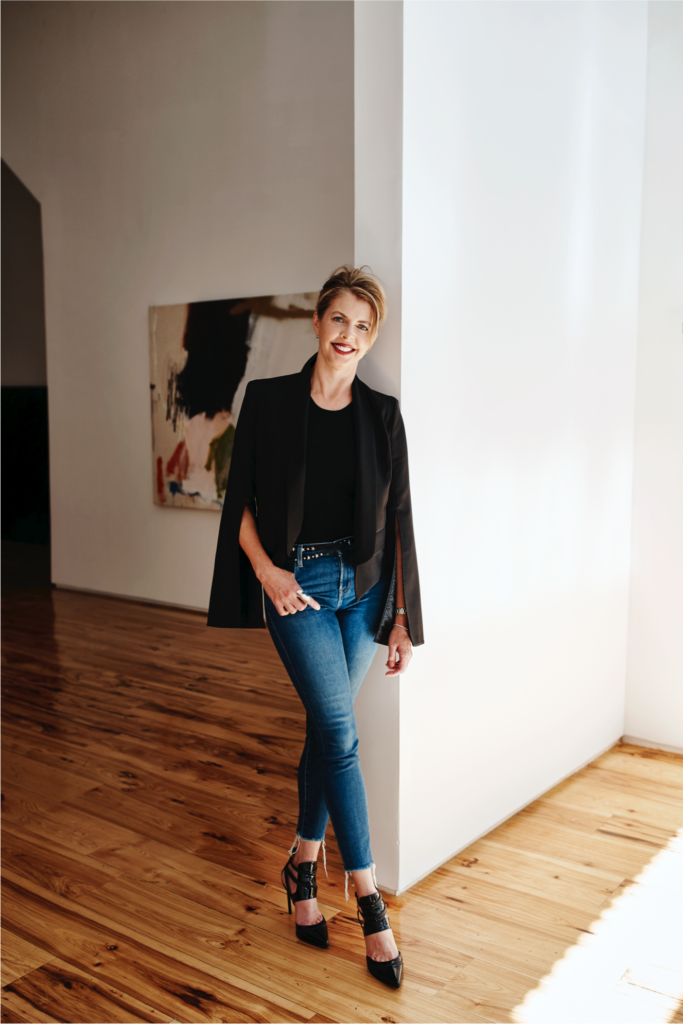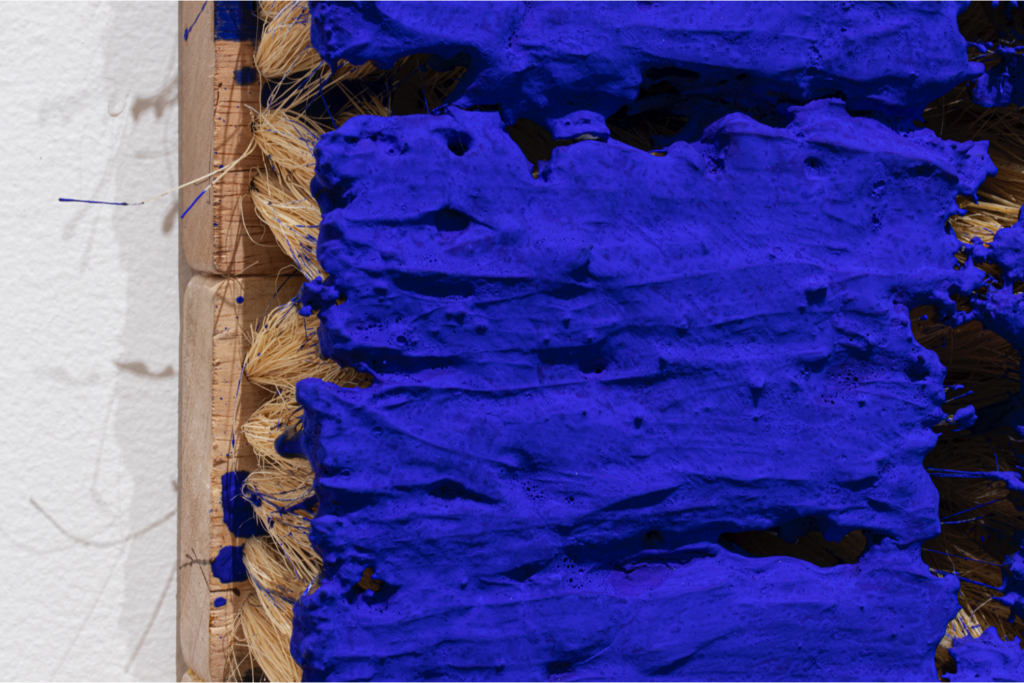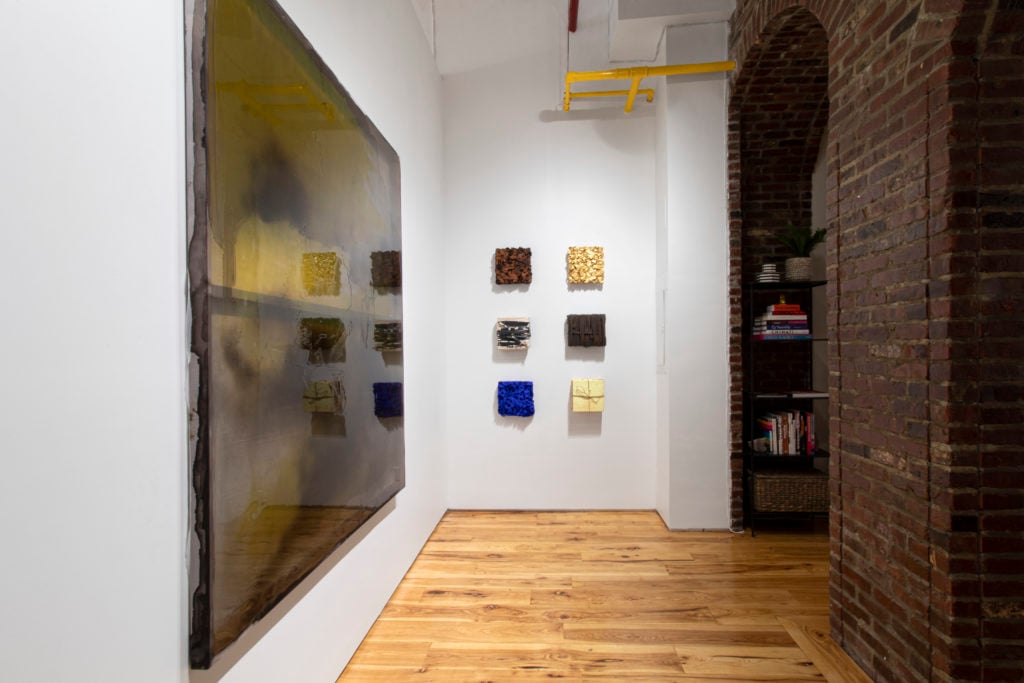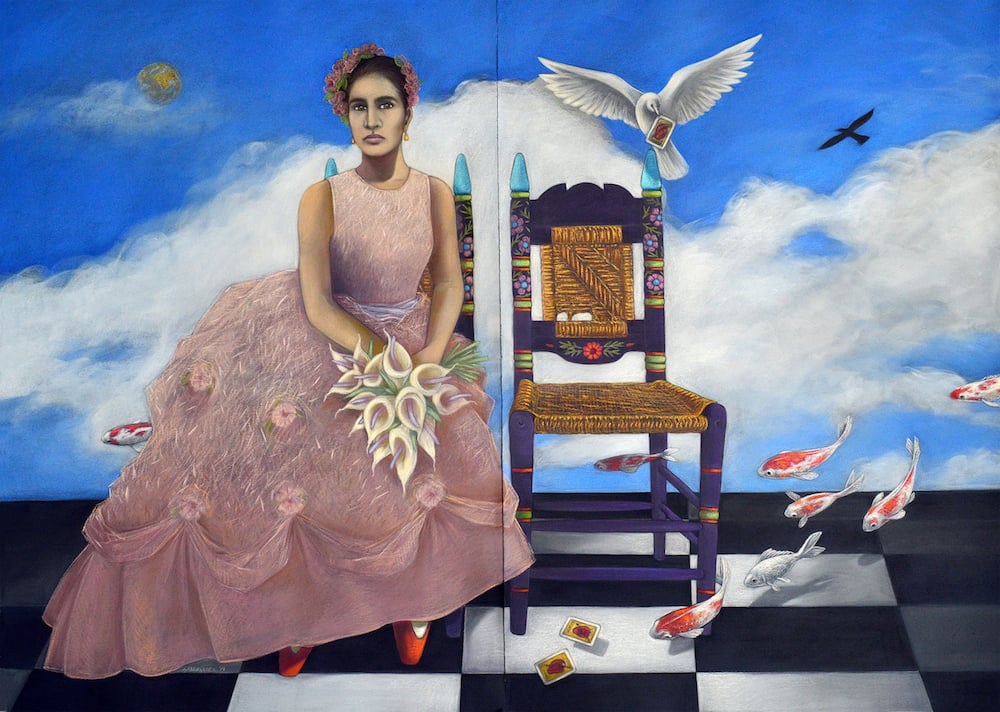People
‘That’s Where the Energy Is’: Art Dealer Monica King on the Importance of Looking Beyond the Major Trends
We caught up with the force behind the eponymous gallery.

We caught up with the force behind the eponymous gallery.

Caroline Goldstein

Taking a walk around Tribeca on the way to the newly opened Monica King Contemporary gallery on Lispenard Street, it’s easy to see why this neighborhood is being hailed as the next big cultural hub of the city. It has the charm of Old New York, is full of large buildings with ample space inside, and is dotted with galleries.
But King’s gallery—which is currently showing “Gregory Coates: Actual and Implied,” the second exhibition since the space opened in September—is tucked away from the bustling frenzy of nearby Canal Street, which gives the space room to breathe.
After working for mega-galleries like Pace and major dealers like Paul Kasmin for years, King returned to her home state of North Carolina to take the helm of Charlotte’s SOCO Gallery for two and a half years before eventually returning to New York to open her eponymous space.
On a freezing December day, posted up in King’s “art grotto”—a room filled with low-slung sofas in the back of the gallery that she uses for meetings in place of a traditional office—she sat down with Artnet News to discuss her first months back in New York, the major art-world trends of 2019, and what she feels is coming next for the industry.

Gregory Coates, Brushes for Christiane (2016). Courtesy of the artist and Monica King Contemporary.
What would you say were the dominant art themes of 2019?
One of the things I am most cognizant of is that sometimes, in the art world, we get bogged down with the idea that everything needs to fit neatly into these big themes. Those themes then dominate the conversation. I tend to look for things that are in the folds, outside of those big themes, because that’s where more of the energy is—maybe because people are not as beholden to the trends of the day.
I think it’s a lot like fashion, where there are people who follow the trends, who are reacting and asking, “What should I be wearing? What shoes do I need this year?” Whereas I think people who make the most important contributions to fashion are those who have a singular sense of style and purpose, who are comfortable in themselves.
I apply the same idea to the art world. I look for the authentic voices who may also happen to fit into some broader theme, but I don’t seek them out because of it.
A lot has been written about the art world’s quest to re-evaluate those who have historically been sidelined. What do you make of recent efforts by some museums and galleries to bring some of those artists into the conversation?
I think it’s great, obviously, that we’re seeing things like the reinstallation at MoMA, or the Baltimore Museum proclaiming it’s going to focus more on women.
I think these are wonderful things. At the same time, we really shouldn’t have to be making these grand gestures. Sadly enough, though, we still are, and maybe one day it will lead to a more [authentically] free and diverse environment.

Installation view at Monica King Contemporary. Courtesy of Monica King.
Your gallery program is very diverse in terms of where your artists are living and working. I noticed a lot of artists who are conspicuously outside the capital-a art world. Was that a conscious decision?
Some of them are based in North Carolina, which is where I’m originally from, and where I directed the SOCO Gallery. I think it’s less reflective of me or my tastes—what I’m really looking for in an artist is someone who makes the work because they have to, and someone for whom the art is the most important thing.
All of the artists I work with are looking to create something that will leave a legacy. It’s not about being “right now” or making for the moment, but making something that will last and affect people not just today, but a hundred years from now.

Judithe Hernández, En Mis Suenos Soy Una Novia (2019). Courtesy of the artist and Monica King Contemporary.
What can we look forward to in the gallery’s program next year?
A lot of artists I work with are trailblazers in their communities. I have a show coming up in September that focuses on Judithe Hernández, who was the only female member of the celebrated Chicano artist collective Los Four in Los Angeles in the 1970s, when there was a second mural renaissance.
Recently, the Whitney asked her to speak about the impact that the Mexican Muralist movement that took hold between the 1920s and 1940s had both on the later generation of Chicano muralists in LA working in the 1970s and on her mentor, the artist Charles White as a prelude to their upcoming exhibition on Mexican Muralism.
She’s been working in her own way for decades, and on the heels of her solo museum show at the Museum of Latin American Art in 2018, the exhibition at the gallery in 2020 will be her first solo exhibition in New York City since 1983.
It sounds like art-world institutions are catching up with her, at long last. But you’re not planning the show in reaction to that exhibition. You actually plan far in advance.
Yes. I plan all of my shows years in advance. I’ve already got shows planned through 2021. I want to give my artists as much time as possible to prepare for a show, to make the work how they want to—for the space, and in their own time. And at the gallery level, we have time to really do it right for them.
Another show I have coming up in March is a dual exhibition of photographers Nelson Morales and Luis Arturo Aguirre. Both of these artists are based in Mexico and work to document the shifting landscapes of gender and identity. Both Morales and Aguirre were featured in the recent McNay Art Museum show, “Transamerica/n: Gender, Identity, Appearance Today,” which explores the concept of gender fluidity.

Installation view of “Gregory Coates: Actual and Implied.” Courtesy of Monica King Contemporary.
Right now, it seems like so many galleries are closing. Yet you recently took this big leap to open one. Did the current climate affect your decision at all?
You know, when I finished graduate school, the art world was dying. If we look back in history, there’s always been galleries opening and closing, right? Sometimes I think if we aren’t careful, we can get a little doomsday-ish about where things are at.
The challenges may be different than they were five years ago, but there were challenges five years ago, too, when the art world was in trouble. The art world has collapsed many times over the course of history, way before any of us were here.
I had a desire to work with certain artists, and there were projects I felt were unrealized for some of these artists, and it really started there. And it became clear that I wasn’t doing this because I want to. I’m doing it because I have to.
If I did something else, yeah, maybe I’d get more sleep, but it wouldn’t be authentic to who I am. People say, “You’re so brave,” but it’s no more brave than getting up and being an artist everyday. That’s real bravery, people!